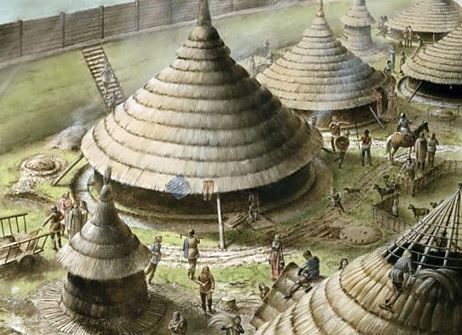1st millennium BC
Posted by OnlineNigeria.com on
About Nigeria
Constitution of the Federal Republic of Nigeria 1999
National Identity
National Security
Foreign Relations
Electoral Procedure
Ministries
States
States
Federal
Ministry of Agriculture and Water Resources
Colleges
Ministry of Commerce and Industry
Ministry of Culture, Tourism and National Orientation
Federal Ministry of Defence
Ministry of Education
Ministry of Energy
Federal Ministry of Environment
Federal Capital Territory Administration (Presidency)
Federal Ministry of Finance
Ministry of Foreign Affairs
Federal Ministry of Environment
Ministry of Health
Ministry of Information and Communications
Federal Ministry of Interior
Federal Ministry of Justice
Ministry of Labour
Mines and Steel Development
National Planning Commission (Presidency)
National Sports Commission (Presidency)
Ministry of Science and Technology
Ministry of Women Affairs

The 1st millennium BC encompasses the Iron Age and sees the rise of many successive empires.
The Neo-Assyrian Empire, followed by the Achaemenids. In Greece, Classical Antiquity begins with the colonization of Magna Graecia and peaks with the rise of Hellenism. The close of the millennium sees the rise of the Roman Empire. In South Asia, the Vedic civilization blends into the Maurya Empire. The early Celts dominate Central Europe while Northern Europe is in the Pre-Roman Iron Age. The Scythians dominate Central Asia. In China, the Spring and Autumn Period sees the rise of Confucianism. Towards the close of the millennium, the Han Dynasty extends Chinese power towards Central Asia, where it borders on Indo-Greek and Iranian states. The Maya civilization rises in Central America, while in Africa, Ancient Egypt begins its decline, rise of the Nubian Empire, and Aksum 's birth. The religions of Judaism, Zoroastrianism, Hinduism (Vedic religion and Vedanta), Jainism and Buddhism develop. Graeco-Roman Europe, India and China see the rise of literature. World population greatly increases in the course of the millennium, reaching some 170 to 400 million people at its close depending on the estimates used.
The Neo-Assyrian Empire, followed by the Achaemenids. In Greece, Classical Antiquity begins with the colonization of Magna Graecia and peaks with the rise of Hellenism. The close of the millennium sees the rise of the Roman Empire. In South Asia, the Vedic civilization blends into the Maurya Empire. The early Celts dominate Central Europe while Northern Europe is in the Pre-Roman Iron Age. The Scythians dominate Central Asia. In China, the Spring and Autumn Period sees the rise of Confucianism. Towards the close of the millennium, the Han Dynasty extends Chinese power towards Central Asia, where it borders on Indo-Greek and Iranian states. The Maya civilization rises in Central America, while in Africa, Ancient Egypt begins its decline, rise of the Nubian Empire, and Aksum 's birth. The religions of Judaism, Zoroastrianism, Hinduism (Vedic religion and Vedanta), Jainism and Buddhism develop. Graeco-Roman Europe, India and China see the rise of literature. World population greatly increases in the course of the millennium, reaching some 170 to 400 million people at its close depending on the estimates used.
